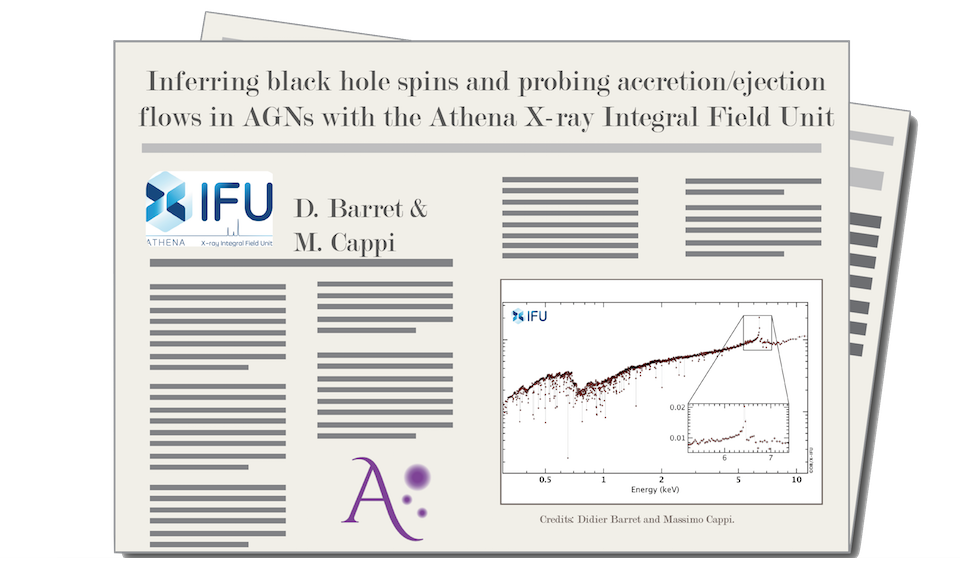
Inferring black hole spins and probing accretion/ejection flows...

By Didier Barret and M.Cappi
Active Galactic Nuclei (AGN) display complex X-ray spectra which exhibit a variety of emission and absorption features, that are commonly interpreted as a combination of i) a relativistically smeared reflection component, resulting from the irradiation of an accretion disk by a compact hard X-ray source, ii) one or several warm/ionized absorption components produced by AGN-driven outflows crossing our line of sight, and iii) a non relativistic reflection component produced by more distant material. Disentangling these components via detailed model fitting can thus be used to constrain the black hole spin, the geometry and characteristics of the accretion flow, as well as of the outflows and surroundings of the black hole. We investigate how a high throughput high resolution X-ray spectrometer, such as the Athena X-ray Integral Field Unit (X-IFU) can be used to this aim, using the state of the art reflection model Relxill in a lamp post geometrical configuration. We simulate a representative sample of AGN spectra, including all necessary model complexities, as well as a range of model parameters going from standard to more extreme values, and considered X-ray fluxes that are representative of known AGN and Quasars (QSOs) populations. We also present a method to estimate the systematic errors related to the uncertainties in the calibration of the X-IFU. In a conservative setting, in which the reflection component is computed self consistently by the Relxill model from the pre-set geometry and no iron over abundance, the mean errors on the spin and height of the irradiating source are <0.05 and ~0.2 Rg. Similarly the absorber parameters are measured to an accuracy typically less than ~5%. Extending the simulations to include blue shifted ultra fast outflows, we show that X-IFU could measure their velocity with statistical errors <1% even for high redshift objects (abridged)."

